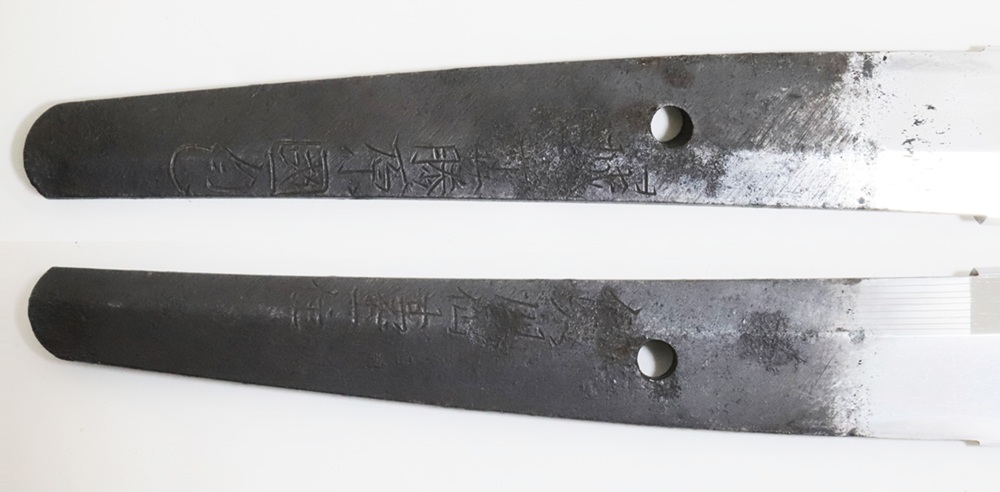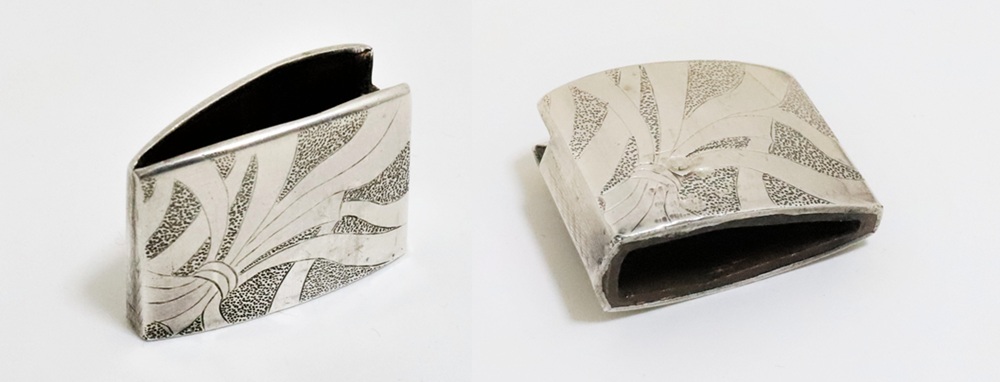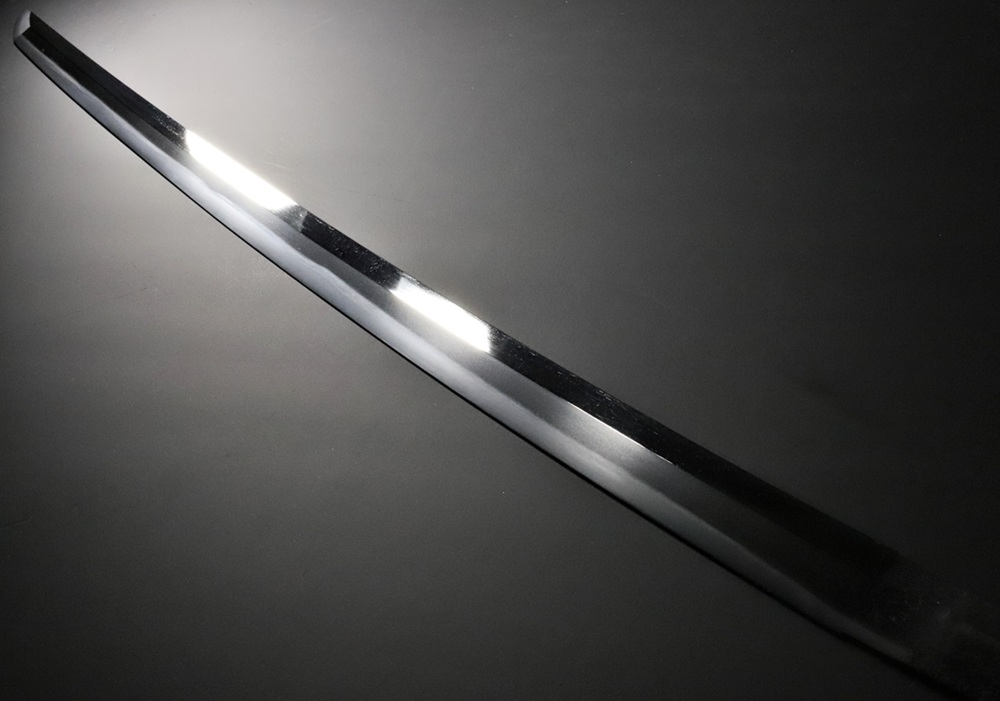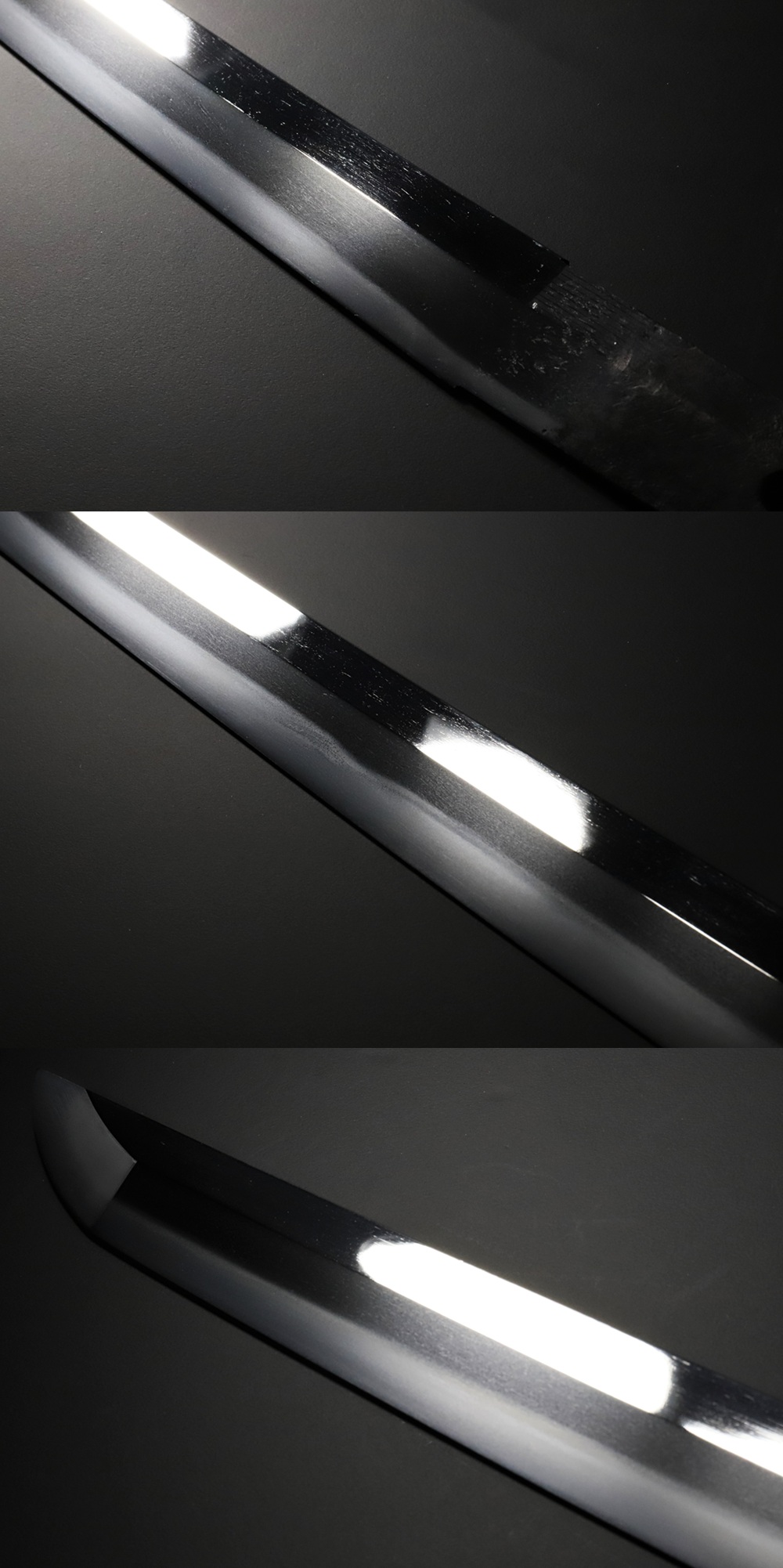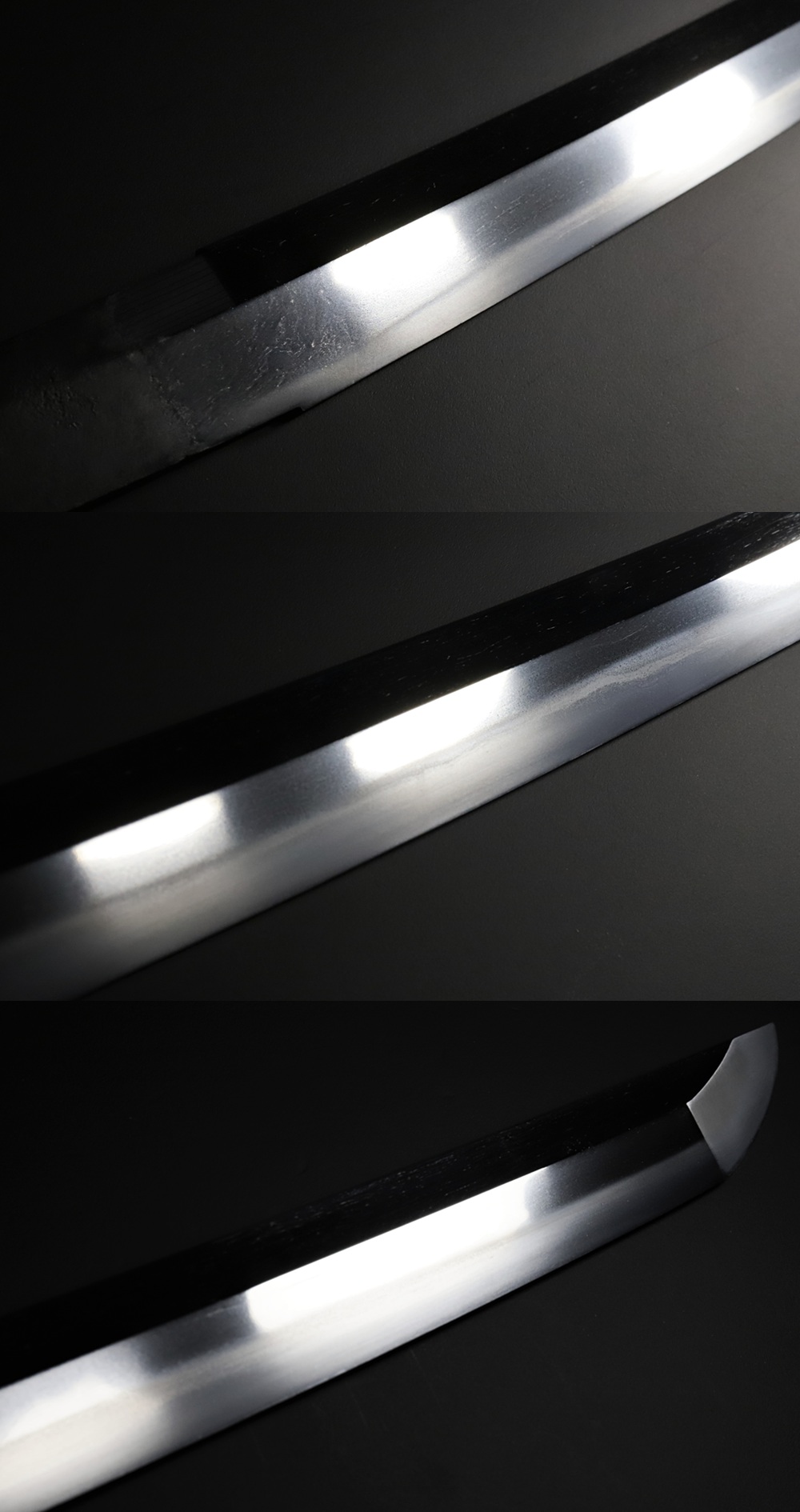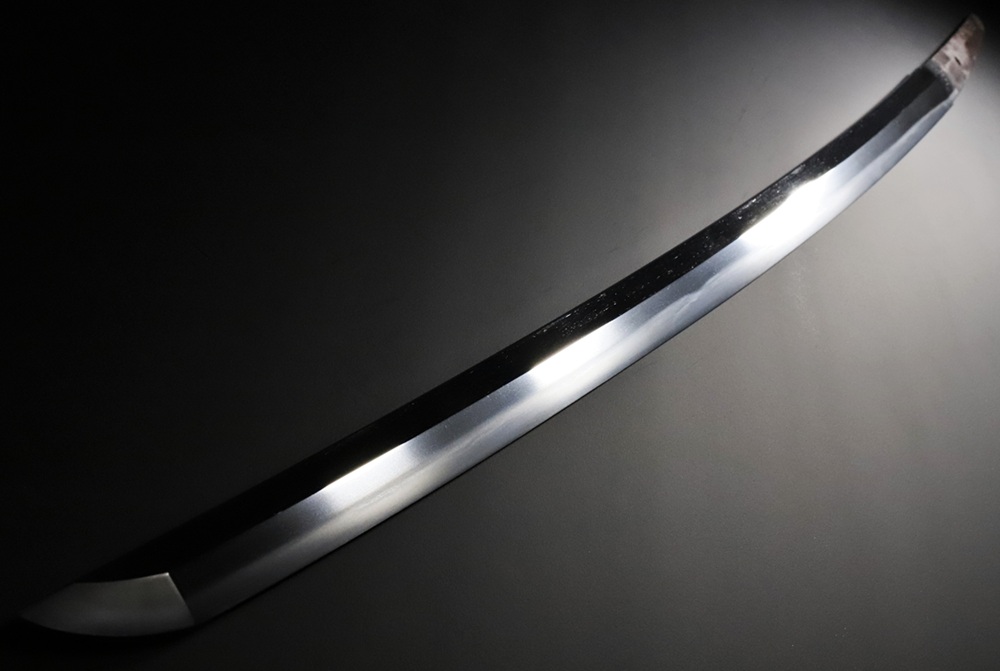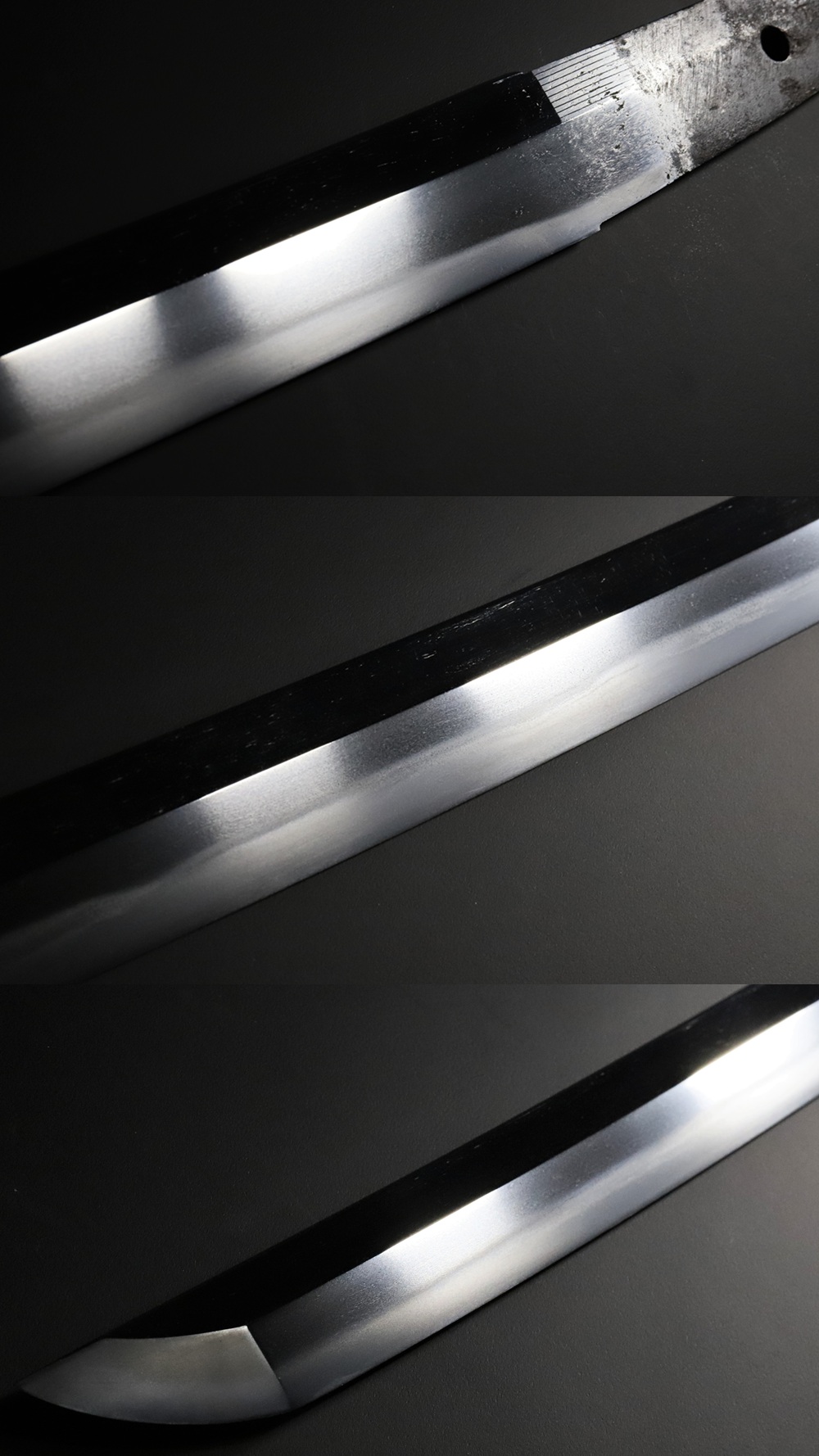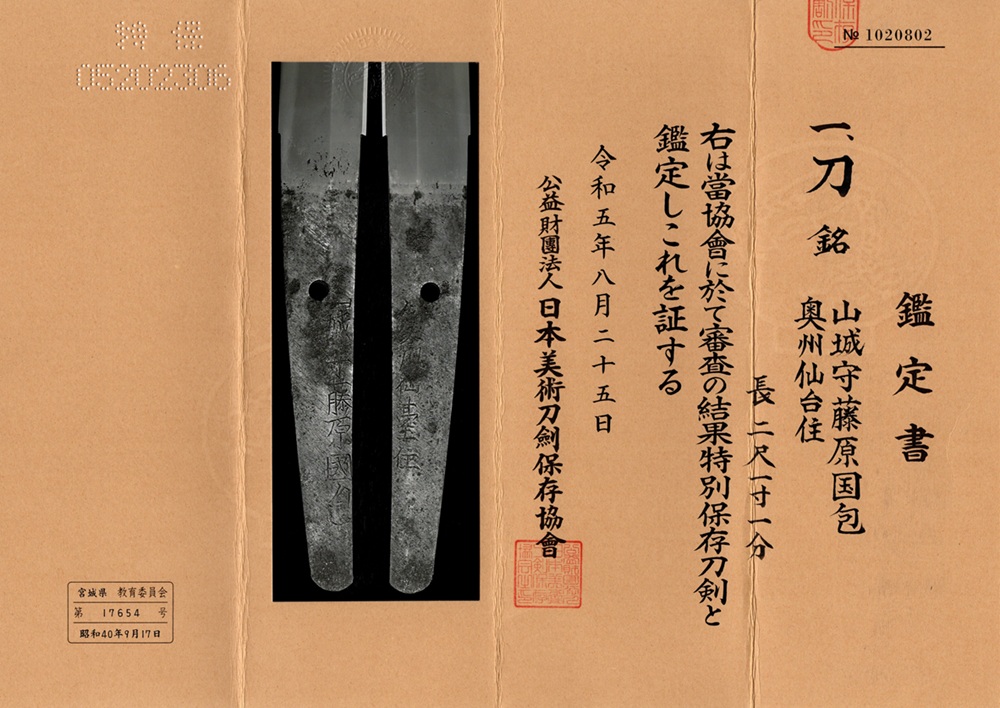
| Product No. KA-0701 山城守藤原国包 | |
|---|---|
| Mei |
Yamashiro no Kami Fujiwara Kunikane Back: -- |
| Shape | Shinogizukuri Iorimune |
| Region | Sendai, Mutsu Province |
| Era | Early Edo Period(around Kambun Era 1661-1673) |
| Length |
64 cm 25.2 in |
| Sori (curvature) |
1.1 cm 0.4 in |
| Motohaba |
3.1 cm 1.2 in |
| Sakihaba |
2.3 cm 0.9 in |
| Munekasane |
0.6 cm 0.3 in |
| Status | Tokubetsu Hozon Token |
| Certification Date | August 25, 2023 |
| Registration Authority | Miyagi Prefecture |
| Registration Date | September 17, 1965 |
| Jihada (Metal pattern) | Dense Masame |
| Hamon (Temper line) | Thick suguha with nie, hotsure, kinsuji and sunagashi |
| Bōshi (Point / Tip) | Sugu hakikake |
| Nakago (Tang) | Ubu, kattesagari file pattern and a kurijiri end |
| Mekugiana (Rivet holes) | 1 |
| Habaki | Copper base silver foil with bundle of long thin strips design habaki |
Price |
2,000,000 JPY |
| Yamashiro no Kami Kunikane [山城守国包](the second) was born in 1612 as the eldest son of the first, Yamashiro Daijo Kunikane [山城大掾国包]. He succeeded the second at the age of 34 in 1645, and in 1667 he was appointed Yamashiro no Kami, and died in 1672 at the age of 61. Like the first, he excelled in suguha-hamon blades, but compared to the first, the suguha-hamon has a wider width with more nie and slightly notare. Some of the hotsure and kuichigai are torn like whiskers by nie and enter the hamon. The masame-kitae of the surface is well forged, making it clear that it is straight-grained. This katana is a masterpiece by the second Yamashiro no Kami Kunikane, which is indistinguishable from the first excepting mei. It has passed the Tokubetsu Hozon Token shinsa in 2023. |




